A hitchhiker guide to manta rays: Patterns of association between Mobula alfredi, M. birostris, their symbionts, and other fishes in the Maldives
July 2021
Aimee E. Nicholson-Jack, Joanna L. Harris, Kirsty Ballard, Katy M. E. Turner & Guy M. W. Stevens
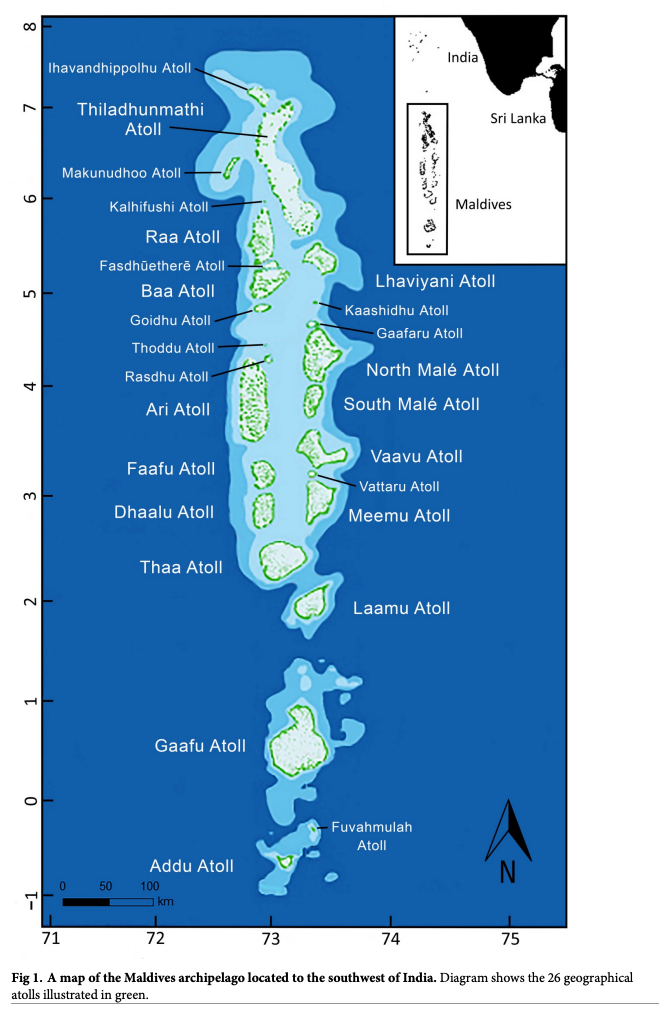
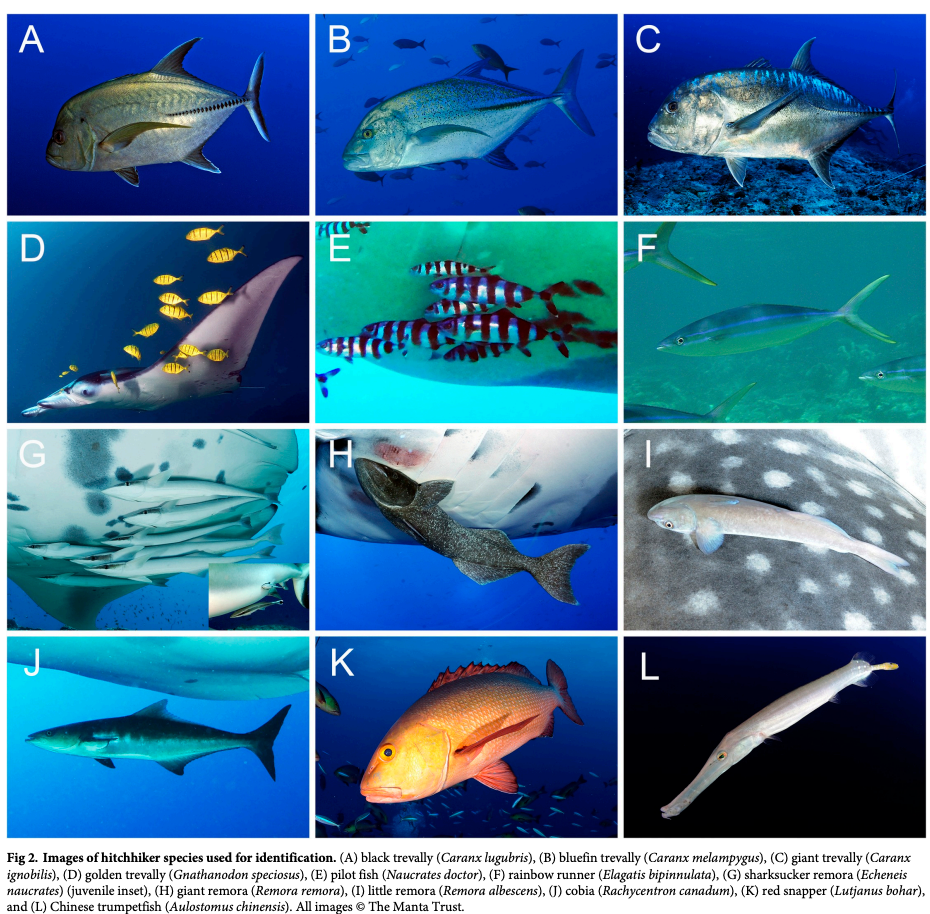

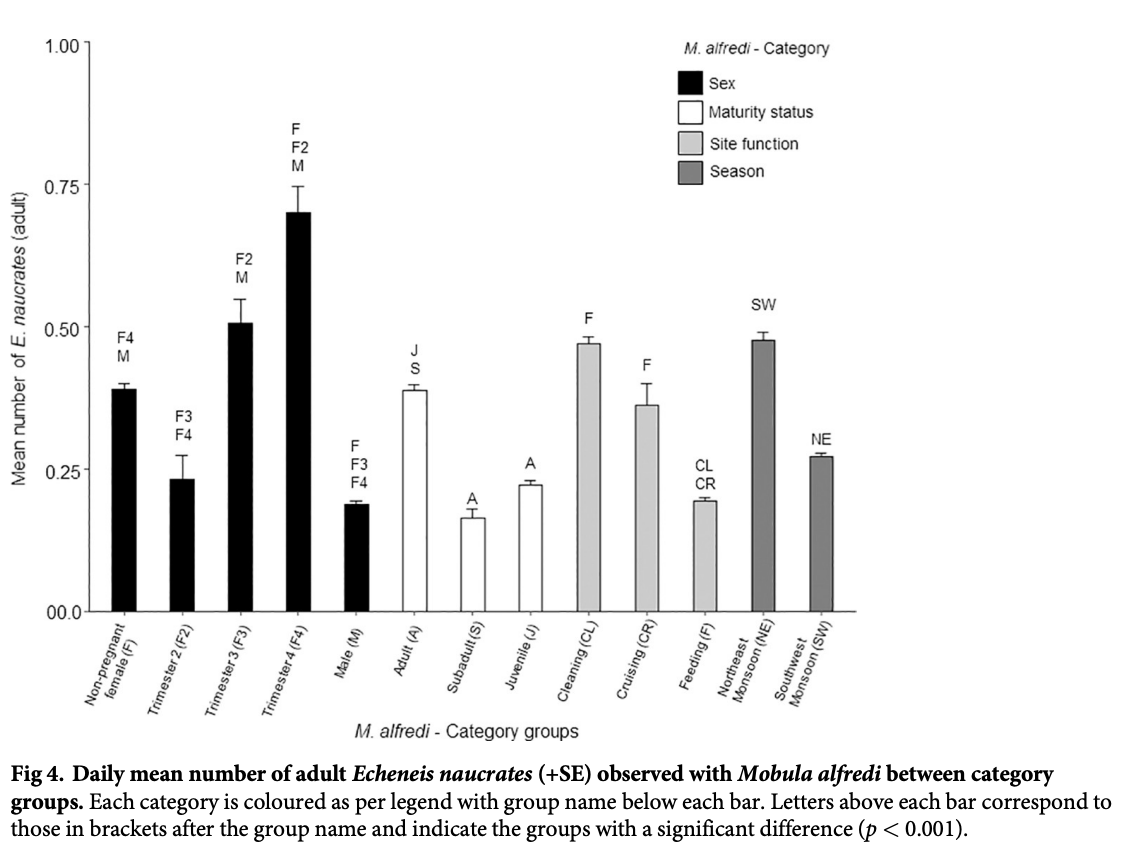
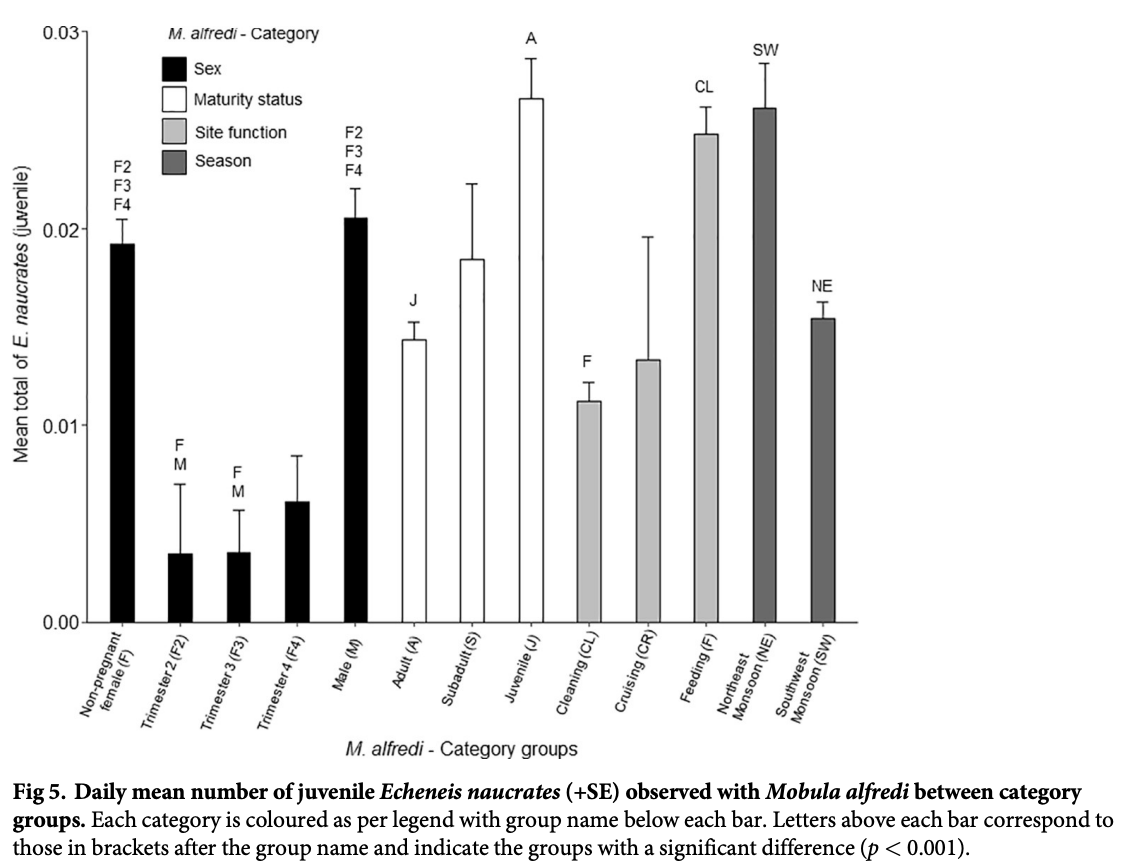
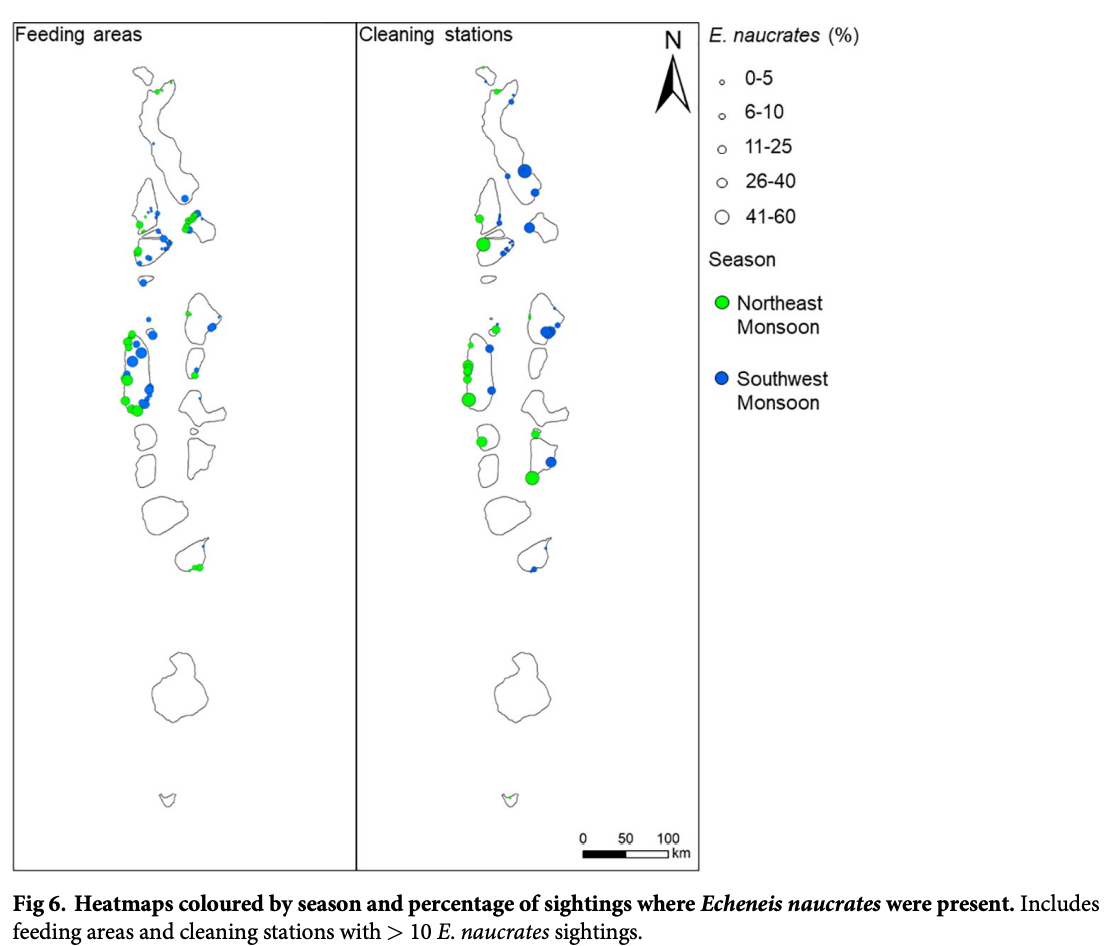

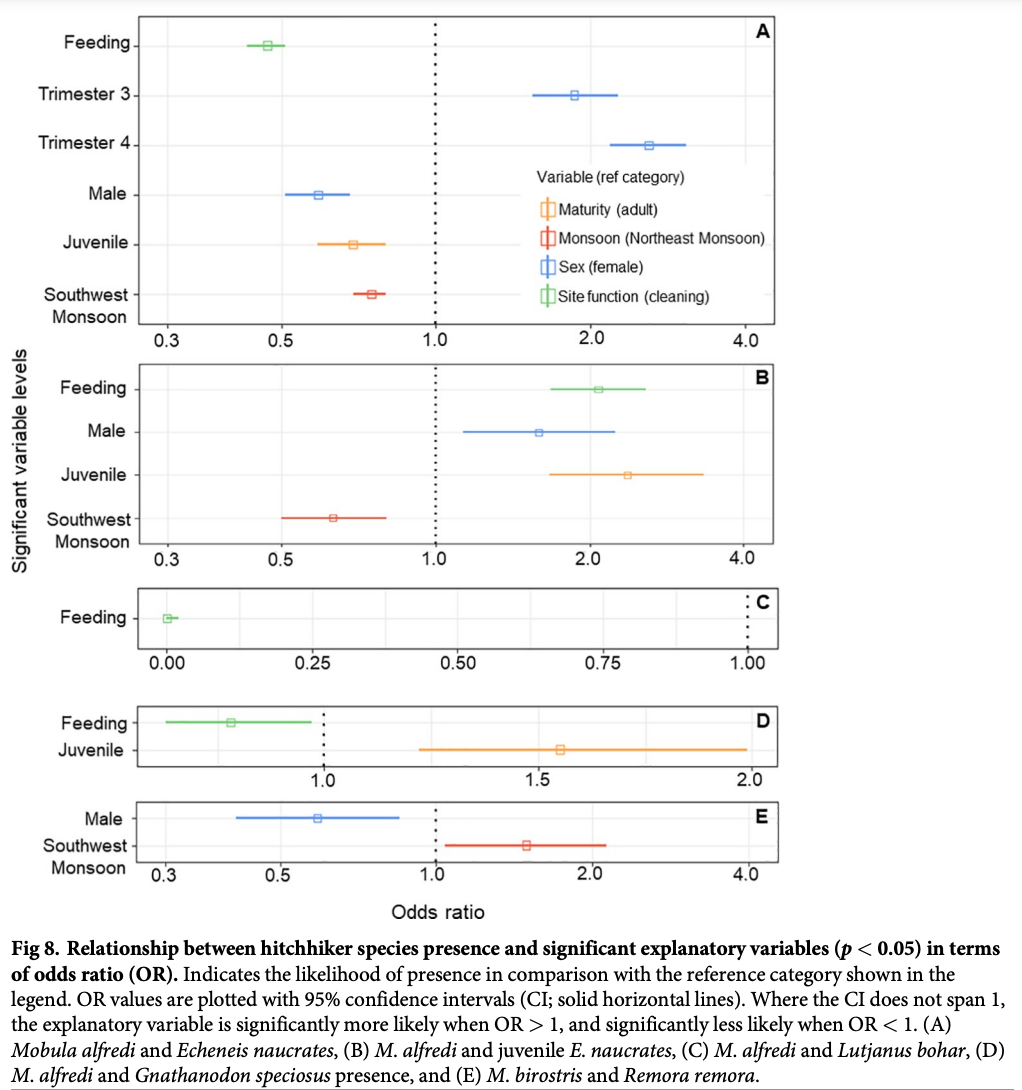
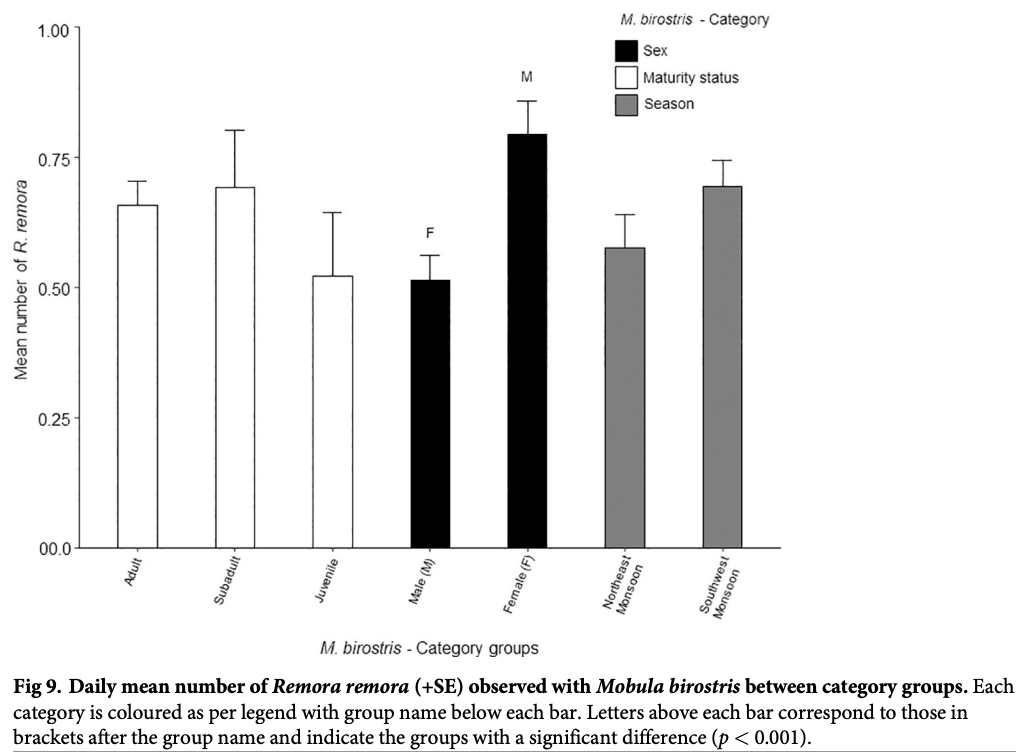
Summary: Much is still unknown about the behavioural ecology of manta rays. These rays are often associated with smaller hitchhiker fish species, with species interactions driving community dynamics, biodiversity, and ecosystem health. Understanding these associations is key to conservation and management efforts, but the patterns remain elusive. This study explored the spatial and temporal variation in hitchhiker presence with manta rays in the Maldives, identifying variation in the species associated with manta rays. Pregnant female reef manta rays (M. alfredi) and M. alfredi at cleaning stations had a higher likelihood of association with adult sharksucker remora, whilst juvenile M. alfredi had a higher likelihood of juvenile sharksucker remora association. Female oceanic manta rays (M. birostris) were most likely to have remora as hitchhikers. These findings may serve as a basis for further studying the relationships between manta rays and their hitchhikers.
Abstract
“Despite being among the largest and most charismatic species in the marine environment, considerable gaps remain in our understanding of the behavioural ecology of manta rays (Mobula alfredi, M. birostris). Manta rays are often sighted in association with an array of smaller hitchhiker fish species, which utilise their hosts as a sanctuary for shelter, protection, and the sustenance they provide. Species interactions, rather than the species at the individual level, determine the ecological processes that drive community dynamics, support biodiversity and ecosystem health. Thus, understanding the associations within marine communities is critical to implementing effective conservation and management. However, the underlying patterns between manta rays, their symbionts, and other hitchhiker species remain elusive. Here, we explore the spatial and temporal variation in hitchhiker presence with M. alfredi and M. birostris throughout the Maldives and investigate the factors which may influence association using generalised linear mixed effects models (GLMM). For the first time, associations between M. alfredi and M. birostris with hitchhiker species other than those belonging to the family Echeneidae are described. A variation in the species of hitchhiker associated with M. alfredi and M. birostris was identified, with sharksucker remora (Echeneis naucrates) and giant remora (Remora remora) being the most common, respectively. Spatiotemporal variation in the presence of manta rays was identified as a driver for the occurrence of ephemeral hitchhiker associations. Near-term pregnant female M. alfredi, and M. alfredi at cleaning stations, had the highest likelihood of an association with adult E. naucrates. Juvenile E. naucrates were more likely to be associated with juvenile M. alfredi, and a seasonal trend in E. naucrates host association was identified. Remora were most likely to be present with female M. birostris, and a mean number of 1.5 ± 0.5 R. remora were observed per M. birostris. It is hoped these initial findings will serve as the basis for future work into the complex relationships between manta rays and their hitchhikers.”
Author Affiliations
The Manta Trust
School of Veterinary Science, University of Bristol
School of Biological and Marine Sciences, University of Plymouth
Funded by
Save Our Seas Foundation
